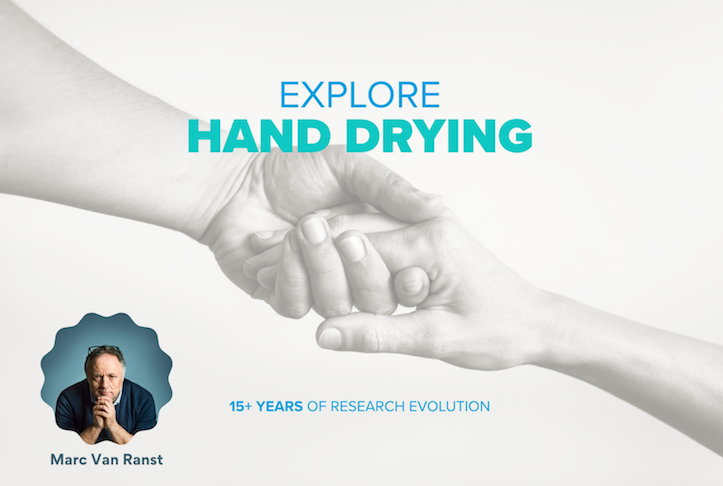 Blog by Professor Marc Van Ranst
Blog by Professor Marc Van Ranst
I am always struck by people’s reaction when they see how viruses spread in the air we breathe. It often prompts a real lightbulb moment. I use a black background and a special light that allow us to actually see the airborne particles flying far and wide. Science can be complicated, but the impact of coughs and colds is something that we can all relate to.
The thing about airborne viruses is that they are pretty hard to avoid. We all need to breathe constantly. So, when water droplets containing virus particles are propelled into the air by coughing, sneezing or blowing air, they can potentially be inhaled and cause infection. All sorts of viruses are spread by air – from Rhinovirus that causes the common cold to severe flu viruses, SARS COV-2 and even diseases such as Measles and Tuberculosis.
Thankfully, there are steps we can all take to restrict the spread of airborne infection. Firstly, we should avoid hugging and kissing friends and family when we have a cold or flu. Also, we should stay home when we are sick and not take our germs to work or school and infect others. I often hear business leaders complain about the cost of absenteeism and the challenges of getting work done when people are off sick. But they should really think a bit more about the cost of presenteeism. When sick employees come into work, they are not only less productive, but often end up infecting their colleagues and so exacerbating the problem.
Another thing we can all do is wear facemasks. In Asia, people have worn them in crowded places for decades, although it has never caught on in quite the same way in Europe. Ensuring good ventilation in and outside of the home also reduces potential infection by providing a constant supply of fresh air.
And of course, we all need to practice proper hygiene – cleaning and disinfecting regularly and paying particular attention to hand hygiene. We should all wash our hands frequently throughout the day and dry them thoroughly afterwards. Good hand hygiene helps to avoid both transmitting and catching a whole host of viruses – not just airborne, but other microorganisms too – such as those that cause gastro-intestinal infections.
While touchless systems for soap and water can help uphold hygiene in washrooms, in the hospital where I am based in Leuven, Belgium we noticed that hand dryers that blow hot air within the confined washroom environment had a greater risk of transmitting viruses from hands. Now, following consultation with us microbiologists, our washrooms have switched back to paper towels and will be sticking with them. We have learned our lesson.
And on the subject of learning, I would stress that informing the public about good hygiene practices and disseminating the science behind them is a vitally important piece of the hygiene jigsaw. We should never underestimate the impact of visualising things that people cannot see and explaining the science.
In many ways good hygiene and minimising the spread of airborne viruses is about common sense and courtesy: washing hands before meals like when I was a child, keeping our homes and public spaces clean, and being considerate towards others. I’m all for starting by teaching kids and letting them be the ones to educate their parents and enforce good hygiene practices at home. In my experience youngsters can be very persuasive and we will be setting in place good behaviours that will last them a lifetime and help to keep our populations safe.
www.europeantissueforum.com





































































































